What to do with tulips after they bloom – tips to encourage new flowers next year
You don't always need to discard these spring bulbs when the flowers fade
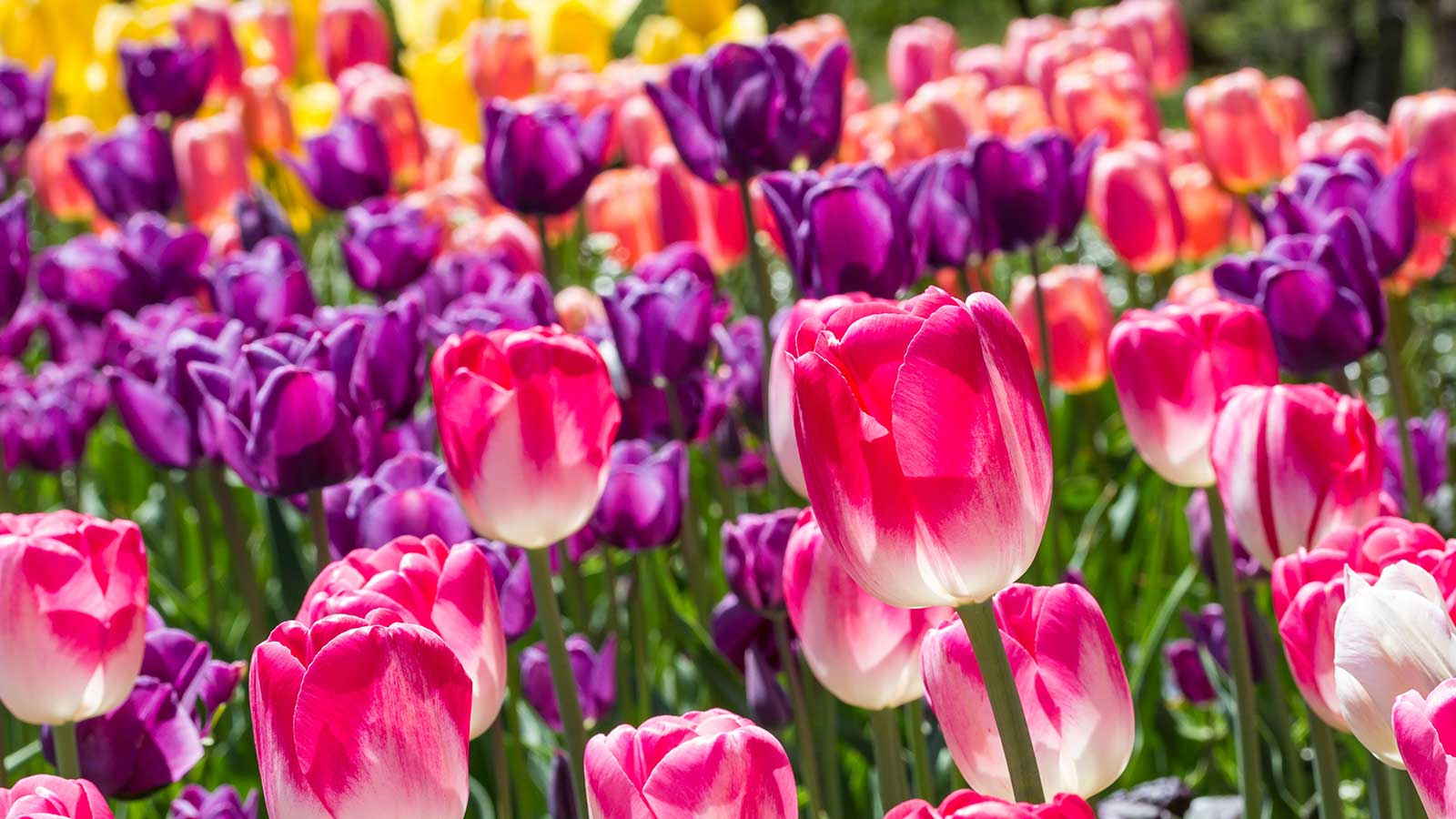

Spring is the season for tulips – a well-loved bulbous plant with flowers that range from frilly and vibrant to slender and demure. But what should you do once the blooms have faded? Are the bulbs destined to be discarded, or can they be coaxed into flowering a second, even third time, when spring rolls around next year?
If you've planted these upright beauties in your yard, you'll be pleased to know that there is a good chance that they will bloom for you again, with the right conditions. They are perennials, after all – but unlike with some spring-flowering bulbs, it's not always as straightforward as simply leaving them in the ground.
'Some bulbs, such as tulips and hyacinths, do better if lifted and then stored dry, ready for re-planting next fall,' says the Amateur Gardening magazine experts. It's easy once you know how, and a great way to reduce the amount you spend on new bulbs each year.

A former professional gardener, Holly now spends her days writing about plants and outdoor living for Homes and Gardens and caring for her large collection of houseplants. Tulips are one of her all-time favorite flowers and, in spring, took centerstage in the cutting garden she grew on her allotment.
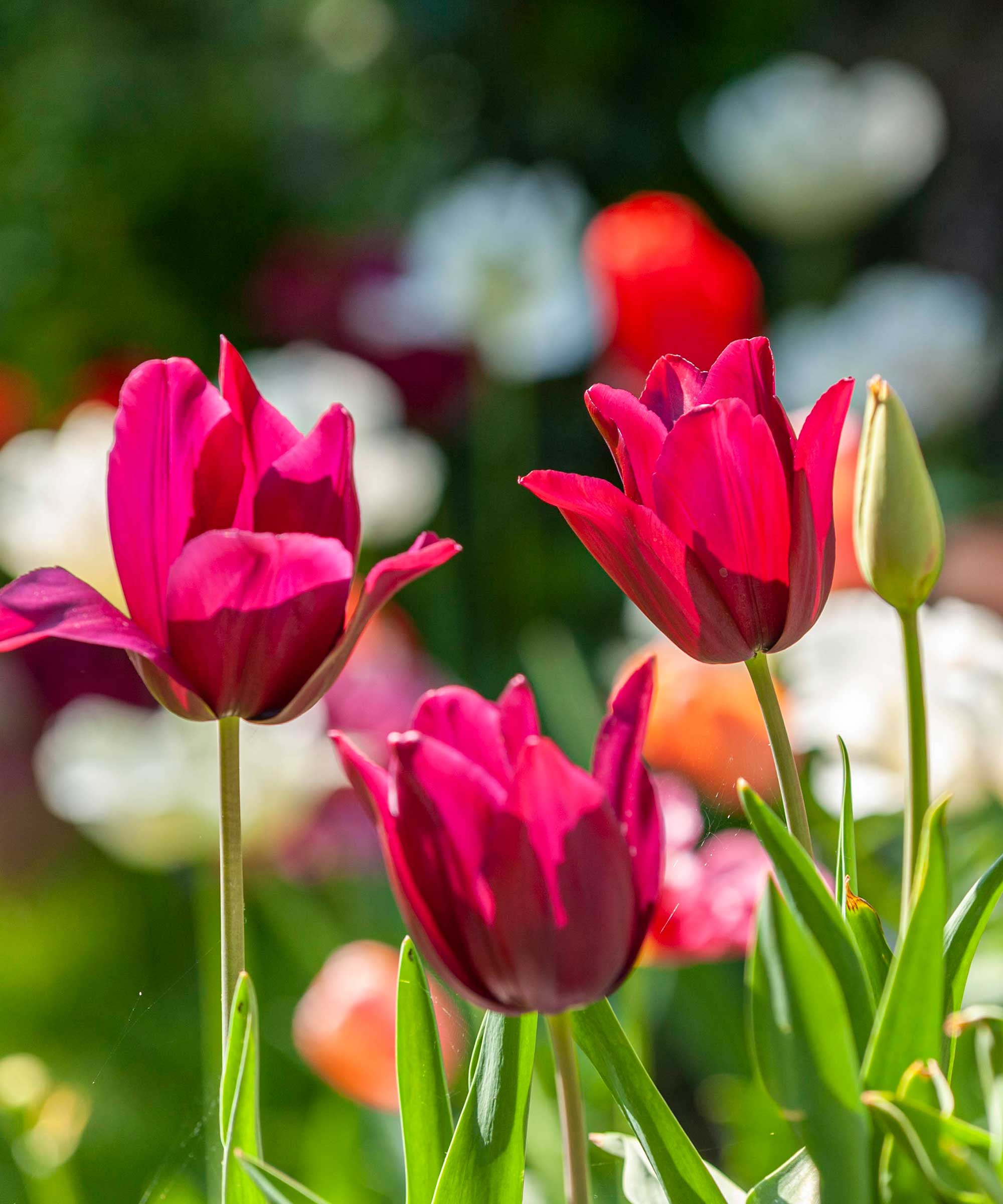
Tulips bring cheer to the spring garden
What should you do with tulips once they've finished flowering?
If you've grown tulips in your spring flower beds and they've started to go over, the first thing you can do is deadhead tulips. This will neaten up the appearance and prevent the tulip from putting its energy into creating seeds. Leave the foliage intact though while it's still green – this is important as it will still be gathering nutrients to 'feed' the bulb.
When the leaves have turned yellow and died back, grab a garden fork or hand trowel and gently ease the bulbs out of the ground. Cut off the dead leaves and brush the soil from the bulbs, then remove any that are showing signs of damage or rot and discard them. Lay the healthy bulbs out to dry, then put them into labeled trays, paper bags, or nets, somewhere that's dry, sheltered from sunlight, and around 65-68˚F.
Check on them periodically while they're in storage and remove any that have started to decay to prevent the problem from spreading. In the fall, you can separate them if needed and replant them, again discarding any that don't look or feel healthy.
Bear in mind that storing your tulips isn't a failsafe path to success. It's often worth planting a few new bulbs, too, especially in more prominent locations in your yard.
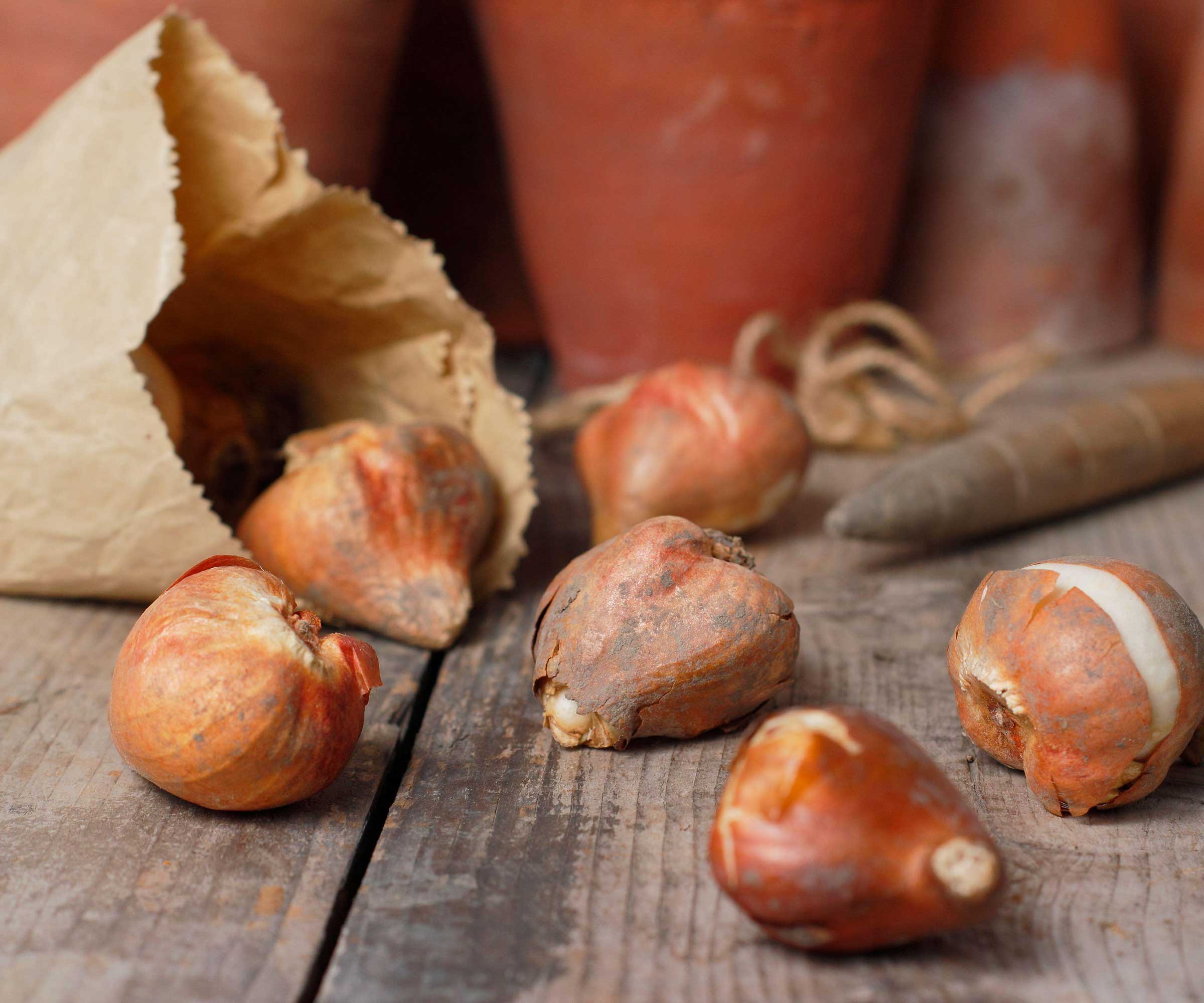
Keep tulip bulbs dry and protected from mice over summer

John has been a garden journalist for over 50 years and regularly answers readers' questions in Amateur Gardening magazine. He has also written four books and has delivered many talks over the years on horticulture.
Top tip: John Negus suggests fortnightly feeding your tulips with a high-potash liquid tomato fertilizer during their growing cycle. Along with allowing the leaves to die back naturally, this will increase the chances of the bulbs flowering a second year.
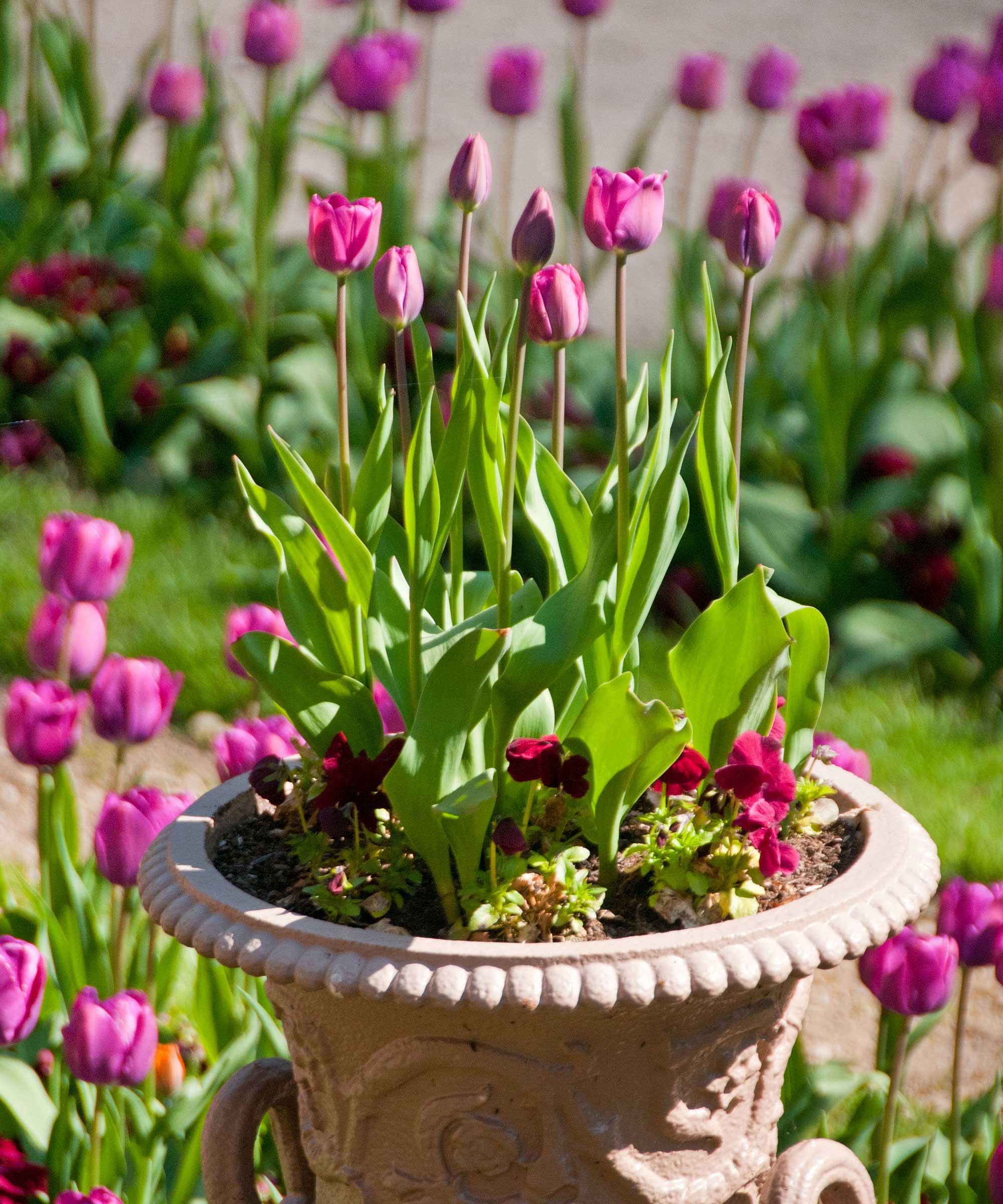
It's often best to treat potted tulip bulbs as annuals
FAQs
I am waiting for the foliage to die back on my tulips, but it is spoiling the look of the flower beds – what can I do?
'Ideally, it is best to leave bulbs to finish the growing season in situ, but they do take up a lot of space for a long time and this can delay all the summer planting,' says John Negus of Amateur Gardening magazine. 'The next best thing is to lift them and heel them in somewhere to wait for the foliage to die down naturally.'
Water them first, and lift them with as much soil as possible into a sunny 'reserve' bed, he says. Keep them here until the leaves have died back – at this point, you can lift them for storage, as above.
Sign up to the Homes & Gardens newsletter
Design expertise in your inbox – from inspiring decorating ideas and beautiful celebrity homes to practical gardening advice and shopping round-ups.

Holly started writing about gardening five years ago, and she is a regular contributor to Homes & Gardens. She has also written many gardening features for Woman & Home and Real Homes, too. She has previous experience as a professional gardener, where she helped to plant and maintain private gardens. Holly has also looked after allotment plots over the years and loves to grow her own flowers and veggies from seed. In her spare time, she enjoys visiting local gardens, botanical drawing, and tending to her ever-growing collection of houseplants.
-
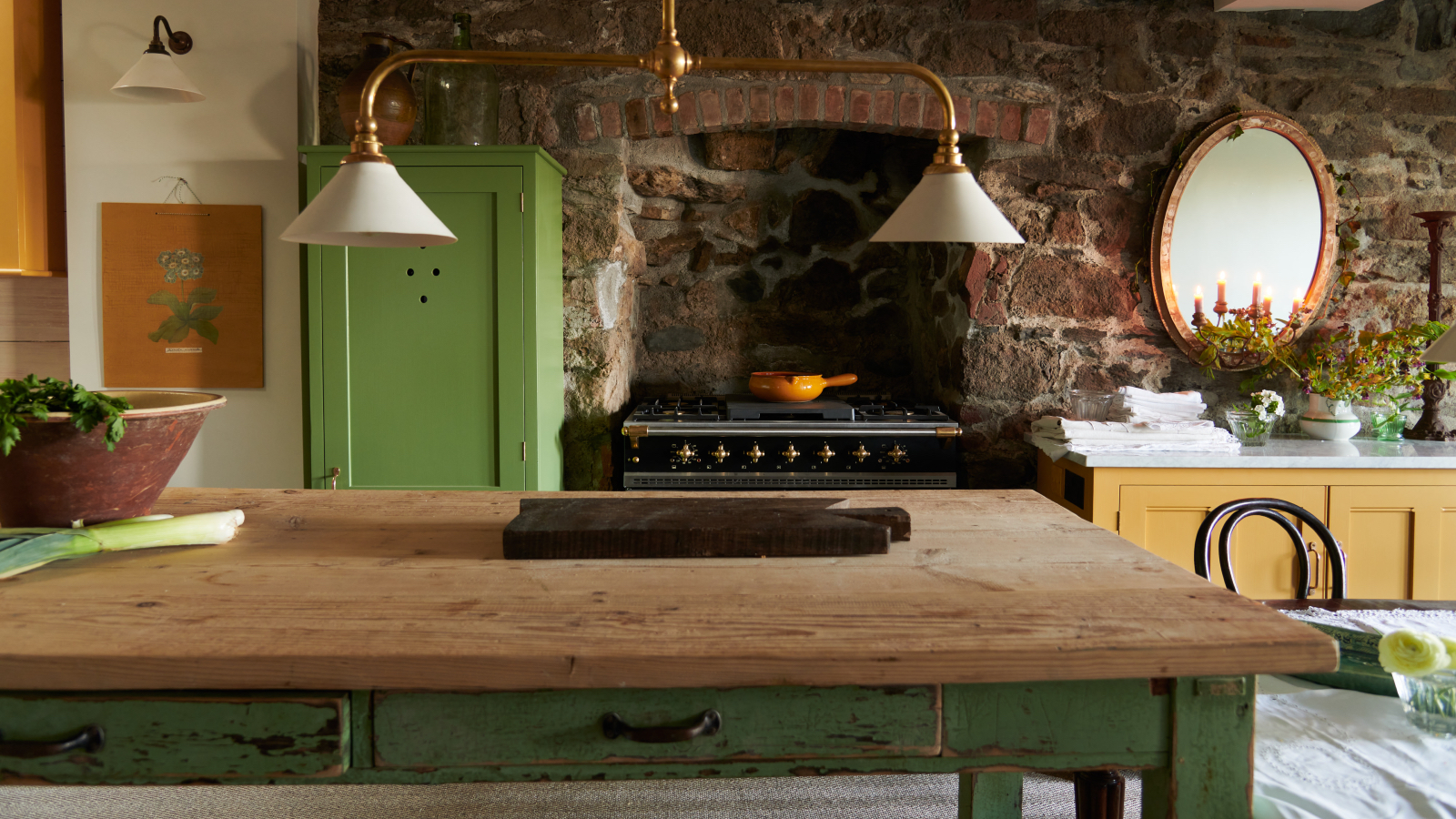 9 things you can clean with glycerin – this cheap and natural cleaner is perfect for indoor and outdoor use
9 things you can clean with glycerin – this cheap and natural cleaner is perfect for indoor and outdoor useFrom patio furniture to silverware, this hydrating and gentle cleaning agent will work miracles
By Ciéra Cree Published
-
 Martha Stewart's houses – inside her most iconic properties, from Cantitoe Corners to Turkey Hill
Martha Stewart's houses – inside her most iconic properties, from Cantitoe Corners to Turkey HillThe lifestyle guru built her legacy around her homes, some of which are the most recognized homes in modern American history – we explore her portfolio
By Megan Slack Published